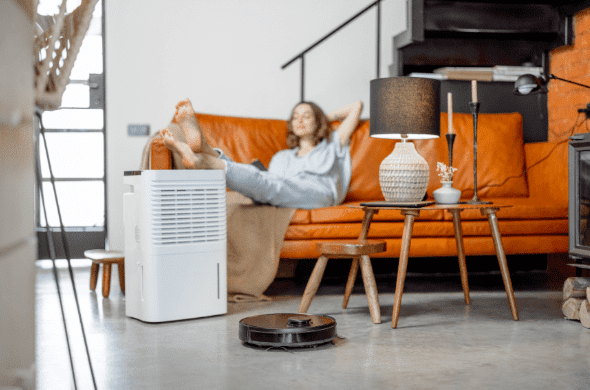Health Threats of Moldy Homes and Indoor Air Quality

The air we breathe indoors is often taken for granted, yet its quality can have a profound impact on our health and well-being. Mold, a common indoor air pollutant, can silently invade our homes, posing serious risks to our respiratory health and overall quality of life. In this article, we delve into the insidious nature of moldy homes and their effects on indoor air quality, supported by research findings from scientific papers.
The Dangers of Mold:
Mold is a type of fungus that thrives in damp and humid environments, making our homes an ideal breeding ground. From basements to bathrooms, mold can lurk in unseen corners, spreading through spores released into the air. These spores, when inhaled, can trigger allergic reactions, asthma attacks, and other respiratory problems.
Research published in the Journal of Allergy and Clinical Immunology highlights the link between indoor mold exposure and respiratory issues. The study found that individuals living in moldy environments are more likely to experience persistent coughing, wheezing, and shortness of breath compared to those in mold-free homes.
Moreover, mold produces mycotoxins, toxic substances that can have detrimental effects on human health. A study published in Environmental Health Perspectives demonstrated that mycotoxin exposure is associated with various health problems, including neurological disorders and immune system suppression.
Indoor Air Quality and Health:
The quality of indoor air is crucial for maintaining a healthy living environment. Unfortunately, mold contamination can severely compromise indoor air quality, leading to a range of health complications. Research conducted by the World Health Organization (WHO) emphasizes the adverse effects of poor indoor air quality on respiratory health, particularly in children and individuals with pre-existing conditions.
Furthermore, a study published in the American Journal of Respiratory and Critical Care Medicine revealed that indoor air pollution, including mold exposure, contributes to the development and exacerbation of respiratory diseases such as asthma and chronic obstructive pulmonary disease (COPD). This underscores the importance of addressing mold contamination to improve indoor air quality and safeguard public health.
Preventing Mold Contamination:
Prevention is key to combating mold contamination and preserving indoor air quality. Implementing proper ventilation systems, maintaining optimal humidity levels, and promptly addressing water leaks and moisture issues are essential measures for mold prevention. Additionally, regular inspection and cleaning of potential mold-prone areas can help mitigate the risk of mold growth.
Research published in the Indoor Air journal suggests that effective ventilation strategies, such as mechanical ventilation and natural ventilation, play a crucial role in reducing indoor mold levels and improving air quality. By adopting these preventive measures, homeowners can create a healthier indoor environment for themselves and their families.
Conclusion:
Mold contamination poses a significant threat to indoor air quality and human health, with research highlighting its adverse effects on respiratory function and overall well-being. Addressing moldy homes requires proactive measures to prevent mold growth and mitigate exposure risks. By prioritizing indoor air quality and implementing preventive strategies, we can create safer and healthier living spaces for everyone.
